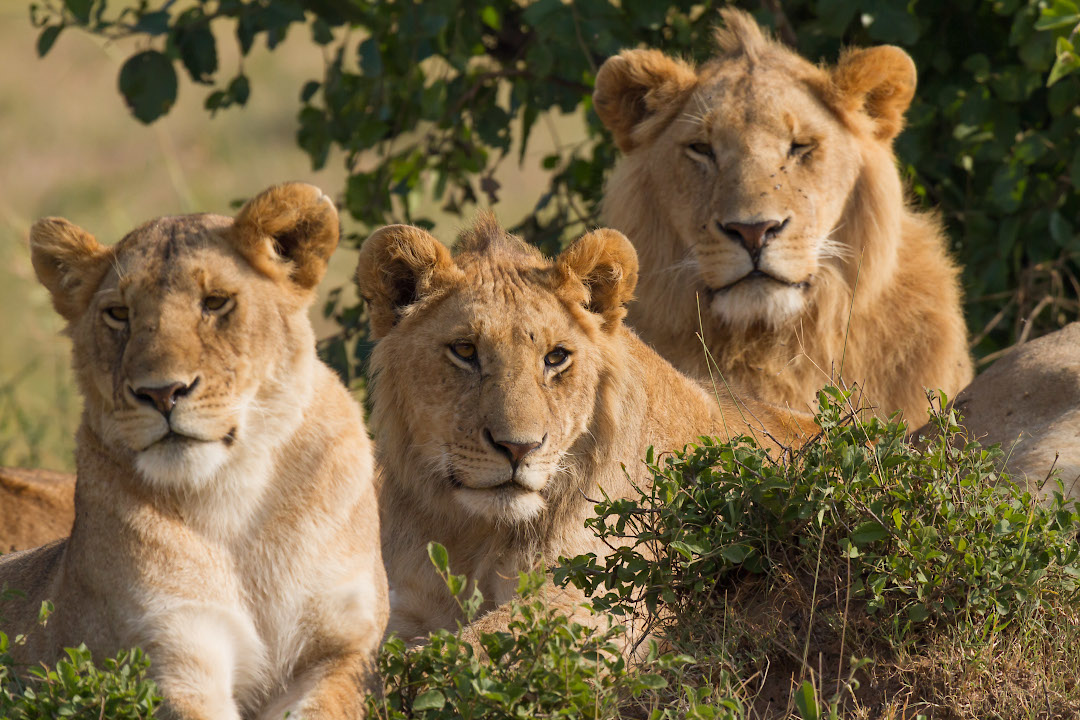The African Lion is the most distinct animal in the world. African Lions are the stars of numerous documentaries and films, yet many African Lion facts still need to be discovered. Sadly, the Red List of Threatened Species lists the African Lion as Vulnerable. Hunters are a constant threat to the African Lion’s survival in the wild, but the king of Africa also has predators. Hyenas are one of the toughest animals in Africa, and hunt in packs. Lions often have to fight hyenas after making a kill, which can be a deadly contest when outnumbered.
These amazing big cats are also found in India, but we focus on the African Lions in this article. We’ve covered everything from their habitat, size, and even their scientific name! W will constantly update our facts to reflect the most asked questions from the wildlife community, so come back regularly to see what’s new at Studying Wildlife.
African Lion Habitat
The African Lion is a native to the sud-Saharan regions in Africa. Its habitat is a mixture of open woodland and grassy plains. Kenya is one of the best countries to find African Lions. Kenya has over 2000 lions and their population is slowly increasing. The African Lion is also found in Tanzania, Botswana, South Africa, Zimbabwe, and Zambia. Nigeria also has a small population of African Lions, but you’ll only find them in reserves. The Kainji Lake National Park and Yankari Game Reserve have African Lion habitats.

Dotun55, CC BY-SA 4.0, via Wikimedia Commons
The African Lion used to roam the entire African continent. However, 96% of their natural habitat no longer has African Lions. Today, sub-Saharan Africa is the only hospitable location for African Lions to roam freely. Lions also existed in Europe. Thousands of years ago, what we now call the African Lion roamed Greece in 1000 BC. Some speculate that Lions were active in Europe as early as 300 BC. During the Pleistocene era, Cave Lions lived in the United Kingdom. Cave Lions are commonly accepted as the only Lion species to live naturally in Europe.
African Lion Size
Male African Lions will usually be bigger than females. An African Lion’s size is vital for its survival chances in the wild. Not only do Lions have to defend themselves against hunters and pack animals, but they also fight amongst their own pride. Males will regularly compete for the top spot and female lions, with two male African Lions fighting for respect amongst their peers. These battles are brutal, meaning the largest Lion is usually the one who wins.
Southern African Lions can weigh up to 496.0 lbs, with females weighing as much as 316.4 lbs. In Eastern Africa, male Lions weigh less, usually getting no larger than 386 lbs. Female Eastern African Lions weigh up to 263 lb, smaller than even the lightest Southern African lions. The largest recorded Lion was eleven feet long and weighed a staggering 375 kgs. One of the heaviest African Lions was in Kenya. Found near Mount Kenya, the Lion weighed 600 lbs, and was male. Most of the biggest Lions are male, with even regular sized males usually bigger than any female lion.

Derek Keats from Johannesburg, South Africa, CC BY 2.0, via Wikimedia Commons
African Lion Scientific Name
The scientific name for the African Lion is Panthera Leo. However, Northern African Lions are referred to as Panthera Leo Leo. Panthera Leo Leo is a subspecies of the Panthera Leo. Carl Linnaeus was the first to name the African Lion Panthera Leo and Panthera Leo Leo for the Northern Lion. Linnaeus was a biology and zoology expert and referenced the African Lion in his book, 10th edition of Systema Naturae.
Quick Fire African Lion Facts
Although these Lions are some of the most iconic animals in Africa, much is still unknown about African Lions. We hope that you’ve already picked up some interesting African Lion facts from our article. However, we’ve made your life even easier with a quick fire refresher on all of the African Lion facts we’ve covered today.
- African Lion Size: Male African Lions are usually bigger than females. The largest recorded Lion weighed 375 kgs and was eleven feet long. Southern African Lions can weigh up to 496.0 lbs, but females weigh around 100 lbs lighter on average. Eastern African Lions are often lighter than their Southern counterparts.
- African Lion Habitat: The African Lion’s natural habitat is of course in African. Kenya is one of the best locations to find African Lions, but you’ll also see them roaming in Tanzania, Botswana, South Africa, Zimbabwe, Zambia, and Nigeria. However, Nigerian African Lions are only found in nature reserves.
- African Lion Scientific Name: Panthera Leo is the African Lion scientific name. However, most people will refer to them as African Lions and on very rare occasions they might be called Panthera Leo Leo if you are studying Northern African Lions.
Conclusion
Now that you have plenty of African Lion facts to impress you family, friends, or teachers, make sure to continue learning about these amazing animals. Most television channels run regular documentaries about African wildlife, which will usually have loads of information about Lions and all of the other big cats. You can also monitor our website, with daily content on a wide-range of animals and wildlife to choose from.
Featured Image by Benh LIEU SONG, CC BY-SA 3.0, via Wikimedia Commons.





